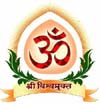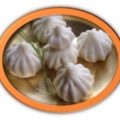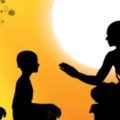 India is one of the most fascinating, colorful, and mind-blowing destination.
India is one of the most fascinating, colorful, and mind-blowing destination.
The culture of India refers collectively to the thousands of distinct and unique cultures of all religions and communities present in India. India’s language, religion, dance, music, architecture, food, and customs differs from place to place within the country.
India has its own uniqueness in its own and that’s why India is also contain two most important and unique things that is YOGA and AYURVEDA.
YOGA: योगश ि चत्तवत्तत्तनिरोधः
 Originated 3000 BCE mention Rigveda. Yoga ( Sanskrit : योग ) is a group of physical, mental, and spiritual practices or disciplines which originated in ancient India. The term “Yoga” in the Western world often denotes a modern form of hatha yoga and yoga as exercise, consisting largely of the postures called asanas. The Yoga Sutras of Patanjali date from the 2nd century BCE, and gained prominence in the west in 20th century after being first introduced by Swami Vivekananda.
Originated 3000 BCE mention Rigveda. Yoga ( Sanskrit : योग ) is a group of physical, mental, and spiritual practices or disciplines which originated in ancient India. The term “Yoga” in the Western world often denotes a modern form of hatha yoga and yoga as exercise, consisting largely of the postures called asanas. The Yoga Sutras of Patanjali date from the 2nd century BCE, and gained prominence in the west in 20th century after being first introduced by Swami Vivekananda.
It has meditative and spiritual core with physical fitness. Even in Bhagavat gita Krishna narrated Arjuna about the yoga types and this are:
1) Karma yoga – the yoga for Action
2) Bhakti yoga – the yoga of devotion
3) Jnana yoga – the yoga of knowledge
Patanjali Yog sutras are widely regarded as the first completion of formal yoga philosophy.
The ultimate goal of Yoga is Moksha (liberation means release from the cycle of rebirth impelled by the law of karma), although the exact form this takes depends on the philosophical or theological system with which it is conjugated.
AYURVEDA:
Ayurveda is (science) knowledge of life and longevity.
Around 7000 BCE it was originated. Ayurveda is a Up-Veda of Atharva -Veda. The Sanskrit word véda “knowledge, wisdom” is derived from the root vid- “to know” The canonical division of the Vedas is fourfold (turīya)
1. Rigveda
2. Yajurveda
3. Samaveda
4. Atharvaveda
 Originated by lord Brahma who is the creature of this universe then Bramha taught this knowledge to another disciple including lord Dhanvantari. Lord Dhanvantari is the god of Ayurveda god of medicine. And incarnation of lord Vishnu. he arise during the samudramanthana from the ocean of milk with the nectar of immortality.
Originated by lord Brahma who is the creature of this universe then Bramha taught this knowledge to another disciple including lord Dhanvantari. Lord Dhanvantari is the god of Ayurveda god of medicine. And incarnation of lord Vishnu. he arise during the samudramanthana from the ocean of milk with the nectar of immortality.
Usually Dhanvantari depicted with four hand holding Amrita (pot of nectar / ambrosia), shankham (conch shell), chakra (wheel), jaloka (leech) rather than the scriptures.
We also celebrate Dhanvantari Thrayodashi every year as a National Ayurveda day.
Ayurveda has 8 branches which deals with each and every diseases of human being.
- Kayachikitsa — Internal Medicine
- Kaumaryabrityam — Pediatrics and Obstetrics
- Grahchikitsa — Psychology and Psychiatry
- Shalakya Tantra — Treatment of disease above supra-clavicular region
- Agadha Tantra — Toxicology
- Shalya Chikitsa — Surgery
- Rasayana Chikitsa — Rejuvenate Treatment/ Geriatrics
- Vajikarana — Infertility and Aphrodisiacs
Ayurveda names seven basic tissues (dhatu), which are plasma (rasa), blood (rakta), muscles (māmsa), fat (meda), bone (asthi), marrow (majja), and semen (shukra). Like the medicine of classical antiquity, Ayurveda has historically divided bodily substances into five classical elements, (Sanskrit) panchamahabhuta, viz. earth, water, fire, air and ether. There are also twenty gunas (qualities or characteristics) which are considered to be inherent in all matter. These are organized in ten pairs: heavy/light, cold/hot, unctuous/dry, dull/sharp, stable/mobile, soft/hard, non slimy/slimy, smooth/coarse, minute/gross, and viscous/liquid.
Ayurveda also names three elemental bodily humors, the doshas (called Vata, Pitta and Kapha), and states that a balance of the doshas results in health, while imbalance results in disease.
Ayurveda has eight ways to diagnose illness, called Nadi (pulse), Mootra (urine), Mala (stool), Jihva (tongue), Shabda (speech), Sparsha (touch), Druk (vision), and Aakruti (appearance).
Dosha’s are the basic fundamental principle of Ayurveda which is more important for the diagnostic procedure along with the prakriti.
Ayurveda mention about the two main therapies i.e. treatment:
1) Shamana (palliative)
2) Shodhana (detoxify and purification)
The aim of Ayurveda is to maintain the health of a healthy person and to cure the ill person too. The motive of Ayurveda is as same as yoga that is nothing but the Moksha that is salvation / liberation.
Written By…
|
Dr. Pallavi Shinde is the director at Shree Vishwamukta Yog, Ayurved and Panchakarma Clinic at Pune, India. She always uses ayurvedic proprietary formulations for many chronic health diseases & many products for Skin Diseases & beauty products. She is a hardcore Researcher, Practitioner, Promoter of Ayurveda. Contact today to book an appointment. |




